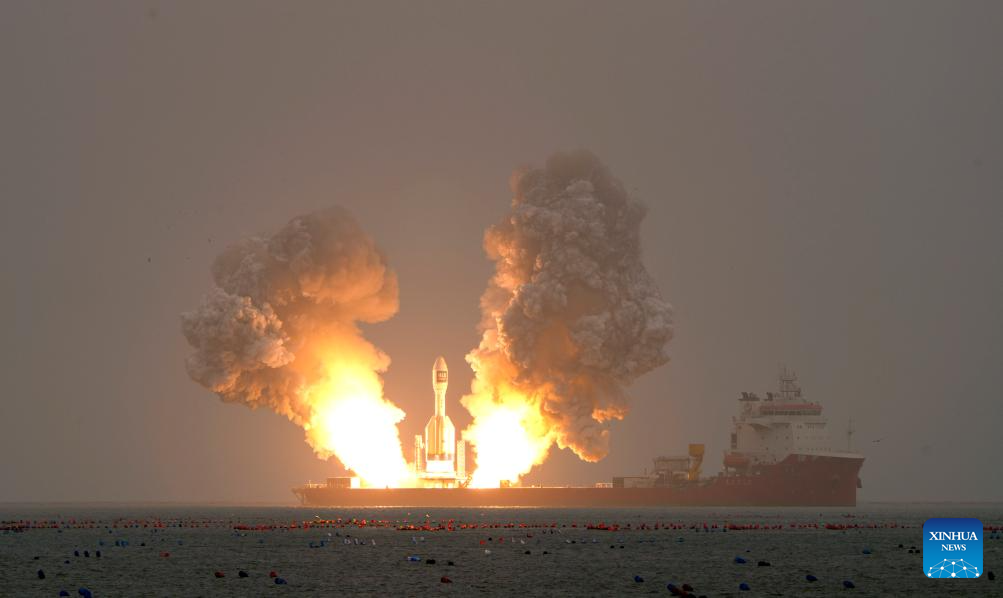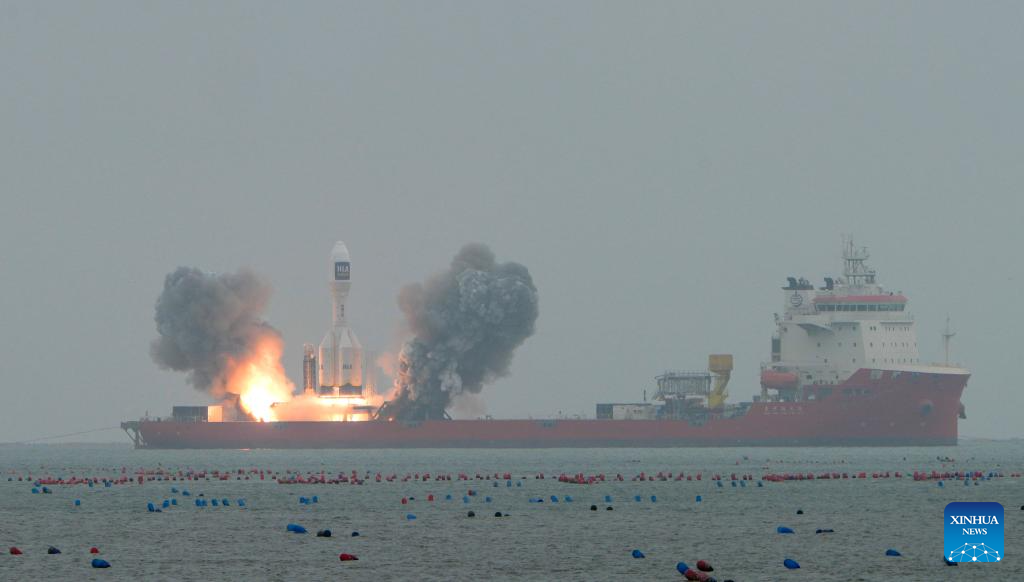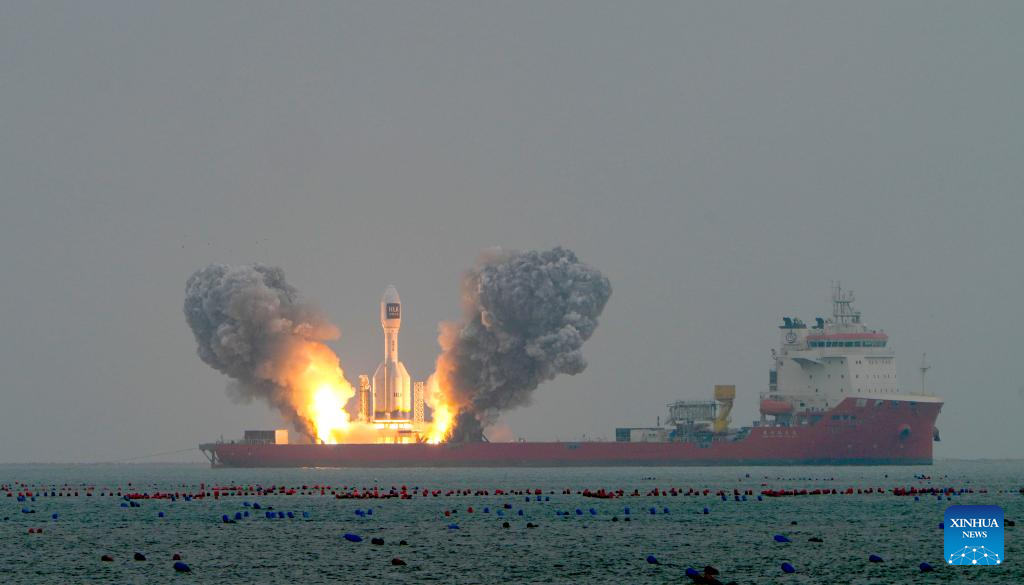


A Gravity-1 carrier rocket carrying a wide-field satellite and two experimental satellites blasts off from waters off the coast of Haiyang, east China's Shandong Province, Oct. 11, 2025. The rocket blasted off at 10:20 a.m. (Beijing Time), placing three satellites into their designated orbits. The Taiyuan Satellite Launch Center conducted the offshore mission. The Gravity-1 carrier rocket made its debut flight in January 2024. (Photo by Guo Jinqi/Xinhua)
HAIYANG, Shandong, Oct. 11 (Xinhua) -- China sent a Gravity-1 carrier rocket into space from waters off the coast of Haiyang, east China's Shandong Province, on Saturday.
The rocket blasted off at 10:20 a.m. (Beijing Time), placing three satellites into their designated orbits. The Taiyuan Satellite Launch Center conducted the offshore mission.
A wide-field satellite and two experimental satellites were onboard the carrier rocket.
The Gravity-1 carrier rocket has a low-Earth-orbit payload capacity of 6.5 tonnes and is capable of delivering a 4.2-tonne payload to a 500-km sun-synchronous orbit, according to Xu Guoguang, chief designer and commander of the rocket.
The series of rockets can deploy more than 10 satellites in a single mission, offering generous payload volume, sea or land-launch compatibility, and rapid-response capability, said Xu.
During this launch mission, the Gravity-1 Y2 carrier rocket executed a roughly 40-degree yaw manoeuvre, swinging its trajectory from southeast to due south within seconds, Xu noted.
Powered by a solid-propellant core stage augmented by four solid strap-on boosters, the carrier rocket remarkably enhanced both stability and adaptability under heaving sea conditions.
The Gravity-1 Y1 carrier rocket successfully completed its maiden flight on Jan. 11, 2024, setting a new record as the world's most powerful solid-fuel rocket and China's highest-capacity commercial launch vehicle developed by a private enterprise.
The mission expanded the country's capability in deploying diversified medium and low-orbit satellites on a large scale, further broadening China's carrier rocket family.
Compared with the Gravity-1 Y1 mission, the Y2 flight demonstrates marked gains in quality, stability and consistency, delivering a demonstrably more reliable vehicle.
The Gravity family of carrier rockets, developed independently by the Chinese commercial aerospace company OrienSpace, is a standardized series of medium-to-heavy lift rockets designed expressly to meet the surging demands for large-scale networking and network replenishment of various types of satellites.

A Gravity-1 carrier rocket carrying a wide-field satellite and two experimental satellites blasts off from waters off the coast of Haiyang, east China's Shandong Province, Oct. 11, 2025. The rocket blasted off at 10:20 a.m. (Beijing Time), placing three satellites into their designated orbits. The Taiyuan Satellite Launch Center conducted the offshore mission.
The Gravity-1 carrier rocket made its debut flight in January 2024. (Photo by Guo Jinqi/Xinhua)

A Gravity-1 carrier rocket carrying a wide-field satellite and two experimental satellites blasts off from waters off the coast of Haiyang, east China's Shandong Province, Oct. 11, 2025. The rocket blasted off at 10:20 a.m. (Beijing Time), placing three satellites into their designated orbits. The Taiyuan Satellite Launch Center conducted the offshore mission.
The Gravity-1 carrier rocket made its debut flight in January 2024. (Photo by Guo Jinqi/Xinhua)
点击右上角![]() 微信好友
微信好友
 朋友圈
朋友圈

请使用浏览器分享功能进行分享
